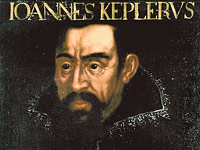|
|
| |
text k videu
|
x

Slavný německý matematik, astronom a také astrolog. Je pokládán za jednoho ze zakladatelů moderní astronomie a jeho působení, tedy nejvýznamnější část jeho práce, je spojena právě s naší zemí - s Prahou Rudolfa II., ale i s dobou následující. Udržoval korespondenci s G. Galileiem, jehož velmi obdivoval, a znal i dílo Koperníkovo. Byl také vynálezcem jednoho z typů dalekohledů, zajímal se totiž i o optiku. Třídílný pořad z cyklu Dvaasedmdesát jmen české historie.
|
|
xRubriky
Odkazy
Měsíční archiv
Výběr tématu
Anketa
Nefunguje
Nefunguje video na této straně?
Pošli link
Ahoj, podívej se na zajímavé video
Po stlačení tlačítka "Pošli" nezapomeň vyplnit správnou e-mailovou adresu a pak odeslat.
Odkaz videa
Credits
|
